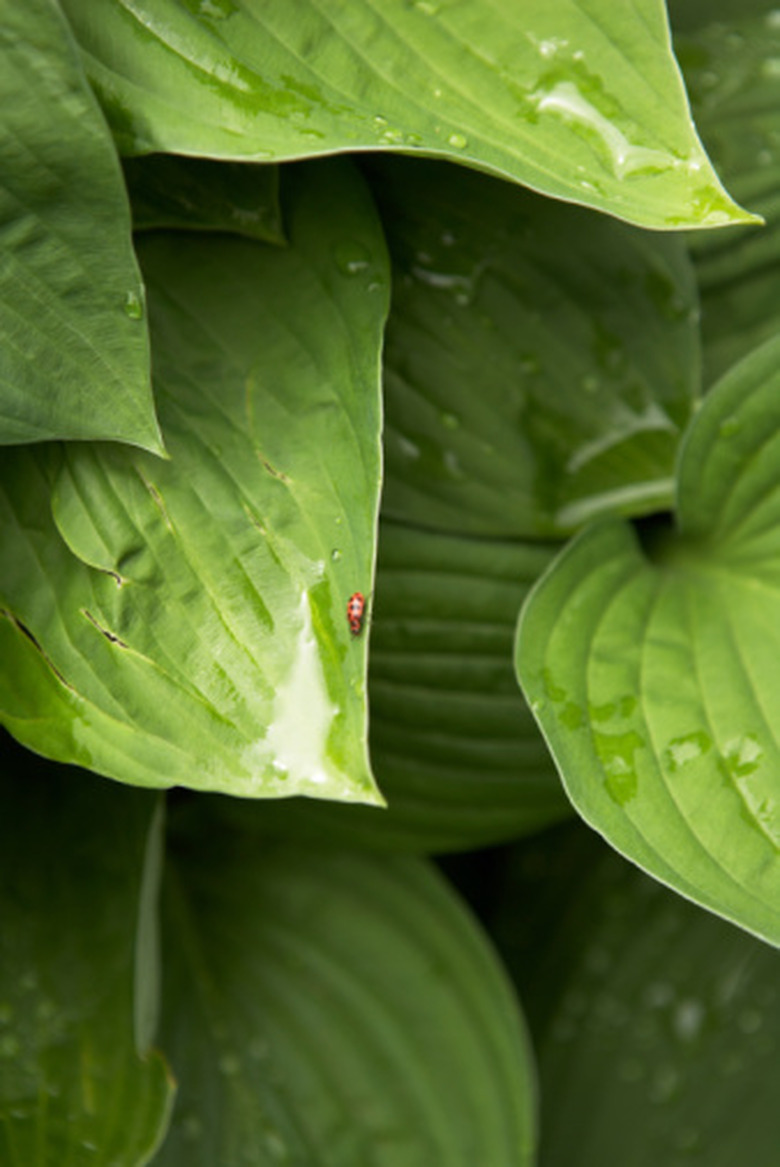How To Get Rid Of Ants Eating Hostas
Things Needed
- Small pruning shears
- Ant repellent
- Cinnamon
- Black pepper
- Used coffee grounds
- Peppermint oil
- Cotton ball
- Ant baits
- Garden hose
- Insecticidal oil or soap
Warning
Do not set any bait stations anywhere near the reach of children and pets. Avoid contact with skin when using insecticides.
Ants are sometimes found on hosta plants, and they may damage the leaves and spread around plant diseases. Carpenter ants sometimes nest inside plant stems and lead to weakened structures. The ants may be signaling a sign of other nuisance pests, such as aphids, whiteflies, scales and mealybugs. The ants transport the sap-sucking insects or their eggs from the ground to the hosta, where the larvae hatch, feed and excrete undigested plant sap or honeydew. The ants eat the sap and honeydew. Eliminating the ants from your hostas may mean you must also eliminate other pests.
Step 1
Prune the tips of low branches before they touch the ground.
- Ants are sometimes found on hosta plants, and they may damage the leaves and spread around plant diseases.
- The ants transport the sap-sucking insects or their eggs from the ground to the hosta, where the larvae hatch, feed and excrete undigested plant sap or honeydew.
Step 2
Purchase an ant-repellent product and slather the sticky substance on the stems of the plant.
Step 3
Keep the soil around the plant slightly moist. This will discourage the ants from entering the area.
Step 4
Grow a diverse variety of flowering trees, shrubs and perennials that provide sources of nectar year round to attract birds and beneficial insects to your garden. They will feed on the ants and sap-sucking insects.
Step 5
Use alternative, organic treatments to keep ants away. Sprinkle cinnamon, black pepper and used coffee grounds around the plant. Apply peppermint oil to a cotton ball and spread it around the perimeter of the plant. Ants do not like these and will stay away. The coffee grounds will also make a good fertilizer.
- Purchase an ant-repellent product and slather the sticky substance on the stems of the plant.
Step 6
Track the ants back to their nests in late winter or early spring. Set ant baits next to the hosta. Space the baits every 10 to 20 feet. Check the bait stations regularly and replace them as needed. Expect to wait a couple of weeks before you see a decrease in the ants, because ant bait is slow-acting.
Step 7
Hose the plant down to wash off bugs. Treat the hosta with an insecticidal oil or soap on a cool day to kill all insects on the plant. Pull off small, curled leaves that aphids or other pests may hide in.
- Track the ants back to their nests in late winter or early spring.
- Expect to wait a couple of weeks before you see a decrease in the ants, because ant bait is slow-acting.
Step 8
Purchase ladybugs at a nursery and release them on the plant. They will eat insects that are attracting the ants.
